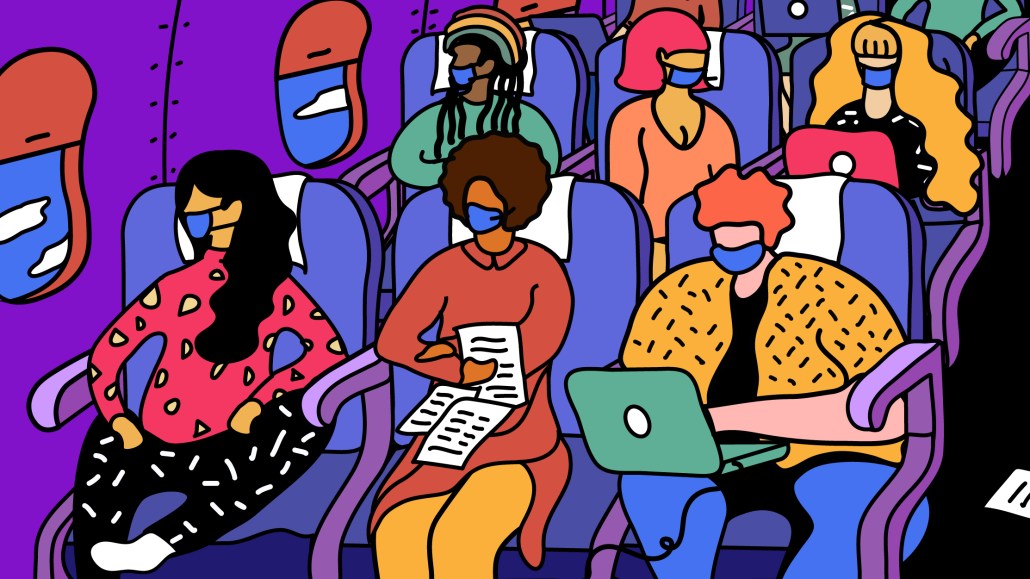Why multicultural needs to be part of general marketing investments, especially for Gen Z

Media agencies that approach multicultural as a separate or smaller investment almost immediately hamstring their marketing strategies, argues one programmatic vendor — and it will negatively impact their engagement with communities beyond Gen Z and communities of color.
In a whitepaper addressing multicultural trends and Gen Z that it is releasing this week, programmatic platform Direct Digital Holdings argues that multicultural communities have an increasing influence on brand preferences and choices for consumers across all brand categories. That trend is particularly acute with Gen Z audiences. Digiday was given early access to the whitepaper and to the agencies that Digiday sought reaction from, it is no longer enough to market to the general market and divide up the rest as just multicultural spending.
“The brands that will be at the forefront and the top runners in the future are the ones that understand that inclusivity is the thing that they should be focused on versus multicultural, or versus general market,” said Sherine Patrick, media strategy advisor for consultative group Ops Shop.
Even as more agencies and brands pay attention to diversity, equity and inclusion and multicultural marketing efforts, they need to consider how they can effectively market to different communities as demographics, generations and cultures change over time. For one, agencies should prioritize media channels and platforms that resonate with communities of color and LGBTQIA+, but also expand influencer marketing campaigns that feature underrepresented voices and specific demographics and ethnic media outlets, said Mark D. Walker, CEO and cofounder of Direct Digital Holdings.
“Understanding how to connect with this generation is crucial for shaping brand choices today and driving strong revenue in years to come,” Walker said.
Multicultural and brand preference strategies
In its whitepaper, Direct Digital Holdings found that Gen Z and millennial consumers are more diverse than their older counterparts on all levels and brand categories — and Gen Z is most likely to say their connections are more than 50% diverse. Some 81% of Gen Z said that multicultural and diverse consumers have a significant impact on their brand preferences and choices, and 72% of millennials said the same (compared to 48% of Gen X and 32% of Boomers), according to the study.
Additionally, 57% of the general population said in the study that multicultural and diverse people have a major influence on their brand preferences. U.S. Census data in the study also noted that the country is getting more diverse than ever: 34% of Americans identify as a race or ethnicity other than white and 8% identify as LGBTQIA+.
As a result, agencies have to push beyond general market and multicultural differences if they want to connect with more consumers, argued Patrick. That responsibility lies with the agency, but also on the brands to equally question assumptions and challenge boundaries.
“It’s our job as agency people to educate our clients,” she said. “That’s why they pay us. I’m not going to pay my hairdresser to do my hair and then have to tell her how to do my hair – that would actually push me away.”
José Villa, president of minority-focused marketing agency Sensis, agreed that brands cannot execute multicultural marketing “because it feels good or it’s part of a diversity effort.” The strategy should rather be focused on the audience as a market opportunity – especially because so many Gen Z and millennials identify strongly with their culture that goes beyond language and race.
“Multicultural marketing has been around for about 50 years [and used to] be focused primarily on language and running ads on Spanish TV and beyond,” Villa said. “Starting with millennials, there’s been a shift in multicultural marketing away from language to culture. … That’s also the accelerating focus with Gen Z.”
Shifting budgets and perceptions
While multicultural marketing and diversity efforts have been around for years, some say the actual financial investments unfortunately paint a different picture. Based on Patrick’s agency experiences, she said oftentimes multicultural was viewed as “expensive” or “checking a box” in a broader media strategy. She recalled that part of the budget was always the smallest or cut first if costs were reduced.
“We’d have a $3 million budget for a general market campaign and $50,000 for multicultural,” Patrick said. “It was seen as very disposable.”
Yet Villa noted a shift in media consumption that perhaps can attract more multicultural investments going forward. For example, Gen Z and millennials consume more earned rather than paid media – so marketing is now more “focused on things like influencers, social media, events and activations, as opposed to big paid advertising campaigns,” Villa said.
While shifting the spending for multicultural marketing is one part of the effort, changing representation, culture and strategy is another ongoing challenge within agencies that could explain the smaller budgets toward multicultural.
Janis Middleton, evp and executive director of inclusion strategy at Guided by Good, said it’s particularly important today for agencies to refine and build on their DEI and multicultural efforts – despite the feeling that momentum has slowed at organizations nearly four years since the murder of George Floyd in 2020. Guided by Good agency 22Squared last March launched a client offering, Embrace, aimed at supporting brands on inclusivity, culture and education.
“[I want to] implore people, stop with the headlines of ‘DEI is dead’,” Middleton said. “If you’re saying that we need to rethink the strategies, say that. If you’re saying we need to rethink our teams, say that. Let’s do that.”
Effective multicultural marketing, Middleton said, has to work together hand in hand with broader DEI initiatives. If there is no diverse culture and inclusion at an organization, the challenge is that much greater to generate authentic multicultural work.
“It’s virtually impossible,” Middleton said. “It’s not just people on the margins who want to see diversity. Everyone wants to see it, because we live in a diverse world, right?”
No matter how multicultural will evolve, it is clear that agencies are thinking beyond communities, languages and age – as well as striving internally to shape their organization’s workforce representation and culture.
More in Media Buying

As Integral Ad Science marks its fourth anniversary on the Nasdaq, speculation mounts over its future
Efforts are underway to take IAS private but there are varying levels of interest from private equity groups.

Media Buying Briefing: Two years later, media buyers still aren’t fully sold on The Trade Desk’s Kokai platform
Two years after its launch, The Trade Desk’s Kokai tool has acquired a mixed reputation among the agency media buyers it was designed for.

The Rundown: The regulatory hurdles still in the way of the Omnicom-IPG merger
British, Australian and EU regulators are all looking into mega agency merger.








